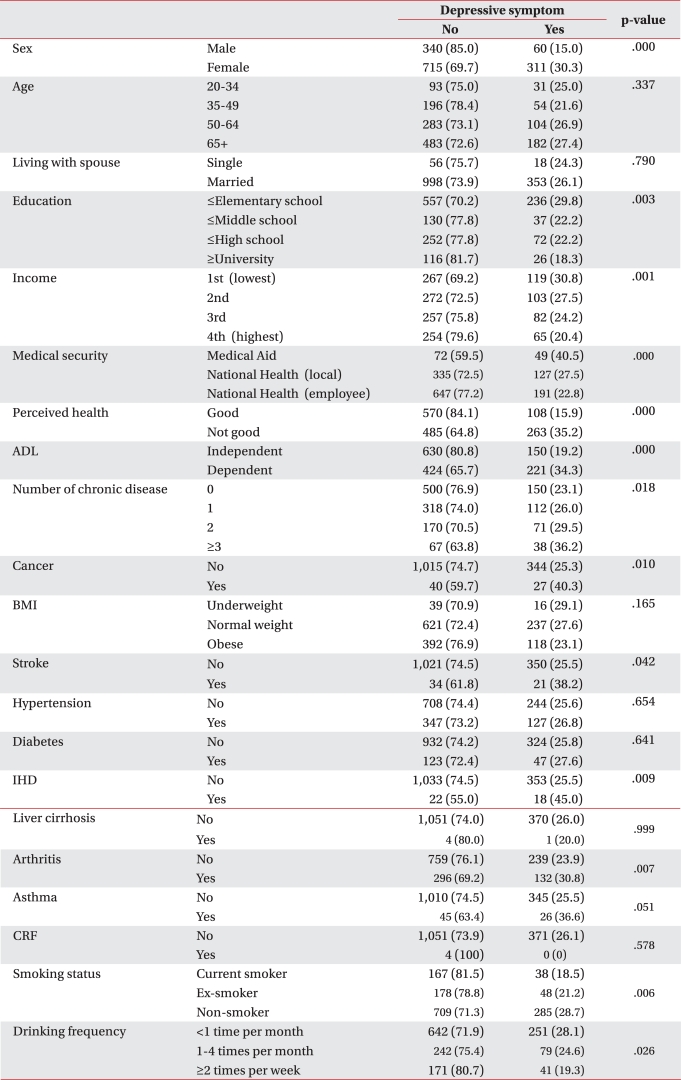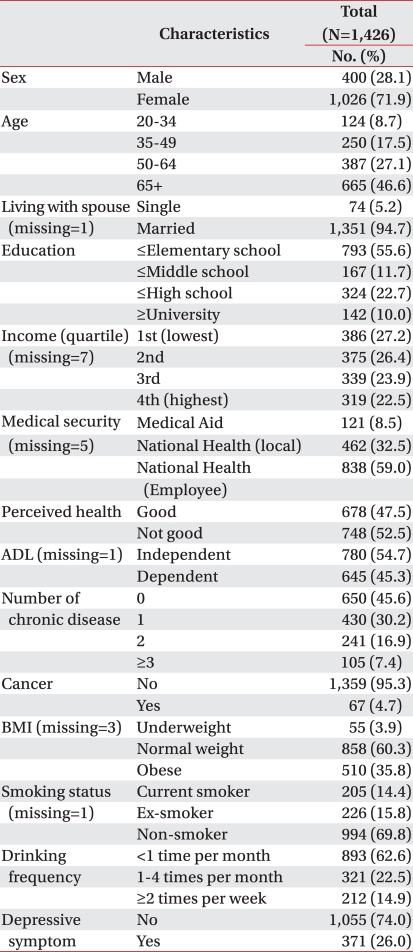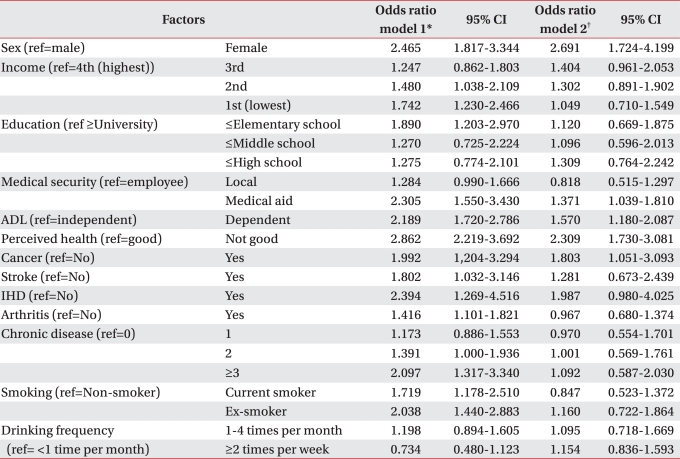1. Andersson GB. Epidemiological features of chronic low-back pain. Lancet. 1999; 354:581–585. PMID:
10470716.

2. Frank A. Low back pain. BMJ. 1993; 306:901–909. PMID:
8347190.

3. Volinn E, Van Koevering D, Loeser JD. Back sprain in industry. The role of socioeconomic factors in chronicity. Spine (Phila Pa 1976). 1991; 16:542–548. PMID:
2052997.
4. Webster BS, Snook SH. The cost of 1989 workers' compensation low back pain claims. Spine (Phila Pa 1976). 1994; 19:1111–1115. PMID:
8059265.

5. Kim HS, Choi JW, Chang SH, Lee KS, Oh JY. Treatment duration and cost of work-related low back pain in Korea. J Korean Med Sci. 2005; 20:127–131. PMID:
15716617.

6. Reme SE, Tangen T, Moe T, Eriksen HR. Prevalence of psychiatric disorders in sick listed chronic low back pain patients. Eur J Pain. 2011; [Epub ahead of print].

7. Bair MJ, Robinson RL, Katon W, Kroenke K. Depression and pain comorbidity: a literature review. Arch Intern Med. 2003; 163:2433–2445. PMID:
14609780.
8. Gallagher RM, Verma S. Managing pain and comorbid depression: a public health challenge. Semin Clin Neuropsychiatry. 1999; 4:203–220. PMID:
10498788.
9. Seok H, Son BK, Ha YR, Ryu HH, Moon JH. Clinical influence of emotional depression on chronic low back pain. J Korean Acad Rehabil Med. 2003; 27:568–574.
10. Williams LS, Jones WJ, Shen J, Robinson RL, Weinberger M, Kroenke K. Prevalence and impact of depres sion and pain in neurology outpatients. J Neurol Neurosurg Psychiatry. 2003; 74:1587–1589. PMID:
14617727.
11. Sohn MK, Chae JM, Yune SH. Pain and psychometric characteristics related to disability evaluation in patients with chronic low back pain. J Korean Acad Rehabil Med. 2000; 24:125–131.
12. Yoo TW, Kang SW, Moon JH. Change in epidemiologic characteristics of the patients with neck and back pain. J Korean Acad Rehabil Med. 2004; 28:579–585.
13. Cho MJ, Nam JJ, Suh GH. Prevalence of symptoms of depression in a nationwide sample of Korean adults. Psychiatry Res. 1998; 81:341–352. PMID:
9925185.

14. Rhee CW. Health status and self-management barriers in people with diabetes: a comparison by Medicaid beneficiary status. Korean J Soc Welf. 2008; 60:231–251.
15. Rush AJ, Polatin P, Gatchel RJ. Depression and chronic low back pain: establishing priorities in treatment. Spine (Phila Pa 1976). 2000; 25:2566–2571. PMID:
11034638.
16. Papakostas GI, Petersen T, Mahal Y, Mischoulon D, Nierenberg AA, Fava M. Quality of life assessments in major depressive disorder: a review of the literature. Gen Hosp Psychiatry. 2004; 26:13–17. PMID:
14757297.

17. Raison CL, Miller AH. Depression in cancer: new developments regarding diagnosis and treatment. Biol Psychiatry. 2003; 54:283–294. PMID:
12893104.

18. Evans DL, McCartney CF, Nemeroff CB, Raft D, Quade D, Golden RN, Haqqerty JJ Jr, Holmes V, Simon JS, Droba M, et al. Depression in women treated for gynecological cancer: clinical and neuroendocrine assessment. Am J Psychiatry. 1986; 143:447–452. PMID:
3082223.
19. McDaniel JS, Musselman DL, Porter MR, Reed DA, Nemeroff CB. Depression in patients with cancer. Diagnosis, biology, and treatment. Arch Gen Psychiatry. 1995; 52:89–99. PMID:
7848055.
20. Newport DJ, Nemeroff CB. Assessment and treatment of depression in the cancer patient. J Psychosom Res. 1998; 45:215–237. PMID:
9776368.

21. Narushima K, Kosier JT, Robinson RG. A reappraisal of poststroke depression, intra- and inter-hemispheric lesion location using meta-analysis. J Neuropsychiatry Clin Neurosci. 2003; 15:422–430. PMID:
14627768.

22. Robinson RG. Post-stroke depression: prevalence, diagnosis, treatment and disease progression. Biol Psychiatry. 2003; 54:376–387. PMID:
12893112.

23. Frasure-Smith N, Lesperance F, Juneau M, Talajic M, Bourassa MG. Gender, depression and one-year prognosis after myocardial infarction. Psychosom Med. 1999; 61:26–37. PMID:
10024065.

24. Carney RM, Freedland KE, Smith L, Lustman PJ, Jaffe AS. Relation of depression and mortality after myocardial infarction in women. Circulation. 1991; 84:1876–1877. PMID:
1914124.

25. Somers TJ, Keefe FJ, Godiwala N, Hoyler GH. Psychosocial factors and the pain experience of osteoarthritis patients: new findings and new directions. Curr Opin Rheumatol. 2009; 21:501–506. PMID:
19617836.

26. Isik A, Koca SS, Ozturk A, Mermi O. Anxiety and depression in patients with rheumatoid arthritis. Clin Rheumatol. 2007; 26:872–878. PMID:
16941197.

27. Katon WJ. Epidemiology and treatment of depression in patients with chronic medical illness. Dialogues Clin Neurosci. 2011; 13:7–23. PMID:
21485743.

28. Glassman AH, Covey LS, Stetner F, Rivelli S. Smoking cessation and the course of major depression: a follow-up study. Lancet. 2001; 357:1929–1932. PMID:
11425414.

29. Boden JM, Ferqusson DM, Horwood LJ. Cigarette smoking and depression: tests of causal linkages using a longitudinal birth cohort. Br J Psychiatry. 2010; 196:440–446. PMID:
20513853.

30. Munafo MR, Araya R. Cigarette smoking and depression: a question of causation. Br J Psychiatry. 2010; 196:425–426. PMID:
20513848.

31. Torres LD, Barrera AZ, Delucchi K, Penila C, Perez-Stable EJ, Munoz RF. Quitting smoking does not increase the risk of major depressive episodes among users of internet smoking cessation interventions. Psychol Med. 2010; 40:441–449. PMID:
19627638.

32. Petty F. The depressed alcoholic. Clinical features and medical management. Gen Hosp Psychiatry. 1992; 14:258–264. PMID:
1505747.
33. O'Sullivan K. Depression and its treatment in alcoholics: a review. Can J Psychiatry. 1984; 29:379–384. PMID:
6434175.
34. Fishbain DA, Cutler R, Rosomoff HL. Chronic pain-associated depression: antecedent or consequence of chronic pain? A review. Clin J Pain. 1997; 13:116–137. PMID:
9186019.

35. Watkins C, Daniels L, Jack C, Dickinson H, van DenBroek M. Accuracy of a single question in screening for depression in a cohort of patients after stroke: comparative study. BMJ. 2001; 323:1159. PMID:
11711407.






 PDF
PDF ePub
ePub Citation
Citation Print
Print




 XML Download
XML Download